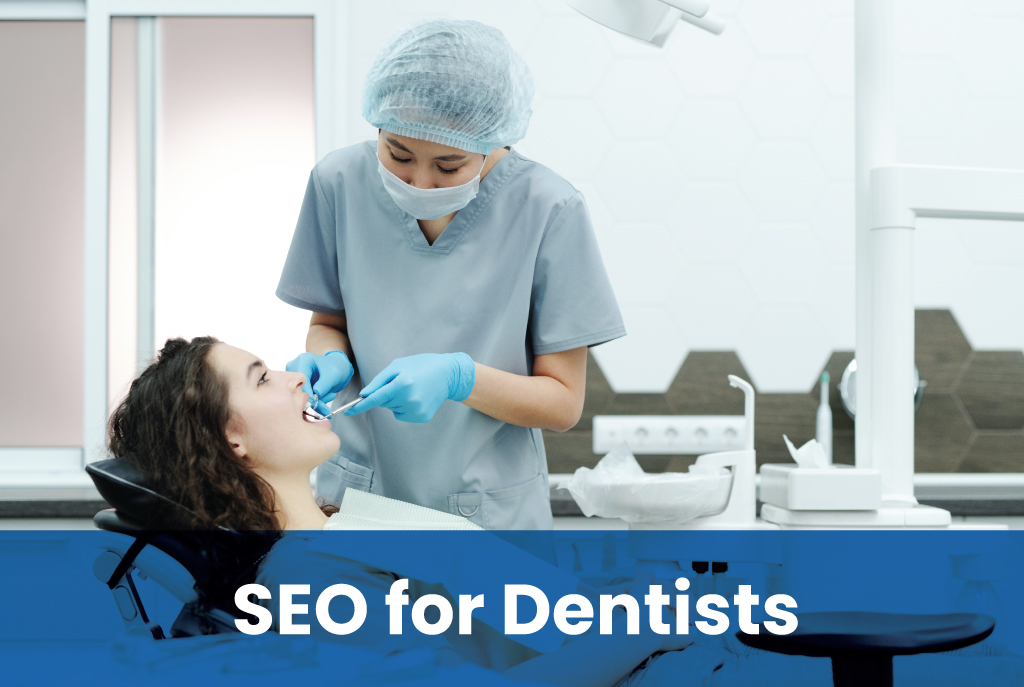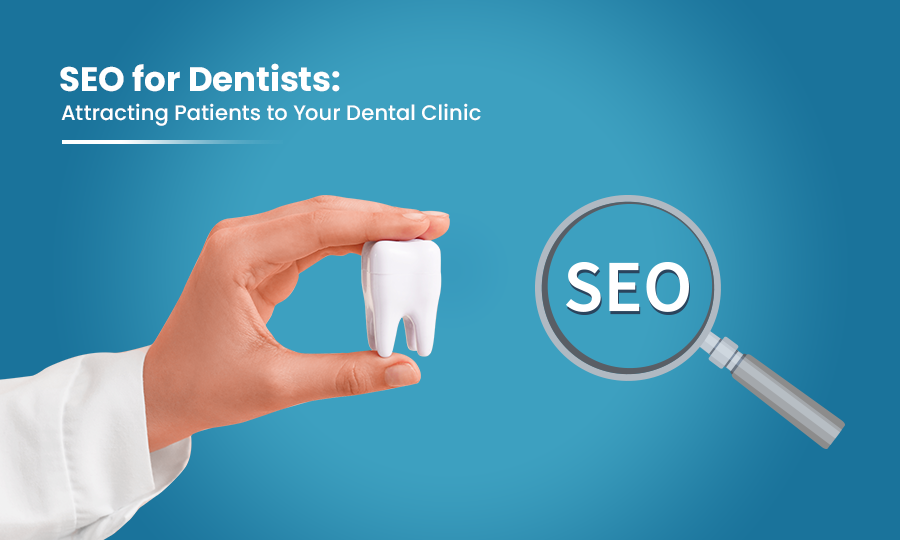Looking to attract more qualified leads to your dental practice? Look no further than dental SEO. By implementing effective dental SEO strategies, you can boost your online visibility, reach a larger audience of potential patients, and ultimately drive more traffic to your practice. In this article, we’ll explore how dental SEO can help you grow your business and attract the right audience for your dental services. Whether you’re a dentist, orthodontist, or dental professional, optimizing your online presence using dental SEO techniques is the key to bringing in more qualified leads. So, let’s dive in and discover how dental SEO can make a significant impact on your practice’s success. And if you’re looking for a dental SEO agency in Philadelphia, we’ve got you covered!

The Importance of Dental SEO
In today’s digital age, having a strong online presence is crucial for any business, and dental practices are no exception. With more and more people turning to the internet to search for dental services, it is essential for dental practices to invest in dental SEO (Search Engine Optimization). Dental SEO not only helps increase the online visibility of a dental practice but also plays a significant role in reaching the target audience and building trust and credibility.
Increasing Online Visibility
One of the primary goals of dental SEO is to increase the online visibility of a dental practice. When potential patients are in need of dental services, they often turn to search engines like Google to find a nearby dentist. By implementing dental SEO strategies, such as optimizing the website for relevant keywords and creating high-quality content, dental practices can improve their search engine rankings and appear on the first page of search results. This increased visibility can significantly impact the number of qualified leads and potential patients that visit the practice’s website.
Reaching Target Audience
Another crucial aspect of dental SEO is its ability to help dental practices reach their target audience. Through keyword research, dental practices can identify the specific phrases and terms that their potential patients are searching for online. By incorporating these keywords into their website content and meta data, dental practices can ensure that their website appears in the search results when someone searches for those keywords. This targeted approach helps dental practices connect with individuals who are actively looking for dental services, increasing the chances of converting them into patients.
Building Trust and Credibility
Building trust and credibility is essential for any dental practice. When potential patients search for dental services online, they often trust the websites that appear on the first page of search results. By implementing dental SEO strategies, dental practices can improve their search engine rankings and appear higher in the search results, thus enhancing their credibility. Additionally, dental practices can demonstrate their expertise and knowledge in the field through high-quality content and informative blog posts, further establishing themselves as a trusted authority in the dental industry.
Understanding Dental SEO
Before diving into the specific strategies and techniques of dental SEO, it is essential to have a clear understanding of what dental SEO entails and its key elements.
Definition of Dental SEO
Dental SEO refers to the process of optimizing a dental practice’s website in a way that helps it rank higher in search engine results and attract more targeted traffic. It involves various strategies, including keyword research, on-page optimization, content creation, and backlink building, all aimed at improving the online visibility and credibility of a dental practice.
Key Elements of Dental SEO
Several key elements make up an effective dental SEO strategy. These elements include keyword research, on-page optimization, high-quality content creation, local SEO, mobile optimization, technical SEO, and backlink building. Each element plays a crucial role in ensuring that a dental practice’s website is easily discoverable by search engines and provides a positive user experience.
Importance of Keyword Research
Keyword research is the foundation of any successful dental SEO strategy. It involves identifying the specific words and phrases that potential patients are using when searching for dental services online. By understanding these keywords and incorporating them strategically into the website’s content, meta data, and headings, dental practices can improve their chances of appearing in relevant search results and attracting targeted traffic.
Keyword research also helps dental practices gain insights into the competition in their local area. By analyzing the search volume and competitiveness of dental keywords, practices can identify areas of opportunity and develop strategies to outrank their competitors in search engine results.

Optimizing On-Page Elements for Dental SEO
Optimizing the on-page elements of a dental practice’s website is crucial for improving its visibility in search engine results and attracting more targeted traffic.
Title Tags and Meta Descriptions
Title tags and meta descriptions are HTML elements that provide a brief summary of a webpage’s content. Optimizing these elements with relevant keywords and compelling descriptions can significantly impact click-through rates from search engine results pages. Dental practices should focus on creating unique and descriptive title tags and meta descriptions for each webpage, incorporating relevant keywords naturally.
URL Structure
The structure of a dental practice’s URLs can also impact its search engine rankings. It is important to create clean and descriptive URLs that include relevant keywords. For example, a dental practice specializing in orthodontics could optimize their URL structure by including keywords like “orthodontics” or “braces” instead of relying on generic URLs.
Header Tags and Content Optimization
Header tags, such as H1, H2, and H3, play a crucial role in organizing the content on a dental practice’s website. By incorporating relevant keywords into these header tags, dental practices can improve their search engine rankings and provide a better user experience. Additionally, optimizing the overall content on the website by incorporating keywords naturally and providing informative and engaging content can help dental practices establish themselves as trusted authorities in the field.
Creating High-Quality Content for Dental SEO
Creating high-quality content is a key component of any dental SEO strategy. It not only helps improve a dental practice’s search engine rankings but also establishes the practice as an expert in the field and builds trust with potential patients.
Identifying Dental Keywords
Before creating content, it is important to identify the dental keywords that potential patients are searching for online. By conducting thorough keyword research, dental practices can understand the specific phrases and terms that their target audience is using. These keywords can then be incorporated strategically into the content to improve the chances of appearing in relevant search results.
Developing Engaging and Informative Content
When creating content for dental SEO, it is crucial to focus on creating engaging and informative pieces that provide value to the reader. Content should be well-researched, accurate, and written in a way that is easily understandable by a non-dental audience. By addressing common questions and concerns that potential patients may have, dental practices can establish themselves as trusted sources of information and build credibility.
Utilizing Multimedia and Visuals
Incorporating multimedia and visuals into dental content can further enhance its engagement and appeal. Visual elements, such as images, infographics, and videos, not only make the content more visually appealing but also help convey information more effectively. Dental practices can utilize multimedia and visuals to demonstrate procedures, explain complex topics visually, and provide a more interactive and immersive experience for their website visitors.

Leveraging Local SEO for Dental Practices
For dental practices looking to attract local patients, leveraging local SEO strategies is crucial to ensure maximum visibility in their target area.
Claiming and Optimizing Google My Business Listing
Google My Business is a free tool that allows dental practices to manage their online presence on Google. By claiming and optimizing their Google My Business listing, dental practices can ensure that their business information, including name, address, phone number, website, and reviews, is accurate and easily accessible to potential patients. Optimizing the listing with relevant keywords and high-quality images can also improve the practice’s visibility in local search results.
Getting Listed in Local Directories
Getting listed in local directories is another effective way to improve the local visibility of a dental practice. By submitting their business information to reputable local directories, dental practices can increase their chances of appearing in local search results. It is important to ensure that the information provided is consistent across all directories and that the listings are targeted to the specific local area.
Generating Positive Reviews and Ratings
Online reviews and ratings play a significant role in the decision-making process for potential patients. Encouraging satisfied patients to leave positive reviews for the dental practice on platforms like Google, Yelp, and Facebook can help build trust and credibility. Dental practices should also monitor and respond to reviews, both positive and negative, to show their commitment to patient satisfaction.
Optimizing Website for Mobile and Voice Search
With the increasing use of smartphones and voice assistants, optimizing a dental practice’s website for mobile and voice search is essential to provide a seamless user experience.
Importance of Mobile Optimization
With a significant portion of internet browsing now happening on mobile devices, it is crucial for dental practices to have a mobile-optimized website. A mobile-optimized website ensures that the content is displayed correctly and the navigation is intuitive on smaller screens. This not only improves the user experience but also helps improve search engine rankings, as search engines prioritize mobile-friendly websites.
Designing Responsive Dental Websites
Responsive web design is an approach that ensures a dental practice’s website adapts and displays correctly on various devices, including desktops, tablets, and smartphones. By implementing a responsive design, dental practices can provide a consistent and user-friendly experience across devices, increasing user engagement and satisfaction.
Optimizing for Voice Search
The rise of voice assistants, such as Siri, Alexa, and Google Assistant, has changed the way people search for information online. Dental practices can optimize their website for voice search by identifying and incorporating long-tail keywords and natural language phrases that are commonly used in voice searches. By adapting to this emerging trend, dental practices can increase their chances of appearing in voice search results and reaching potential patients who prefer using voice commands.

Implementing Technical SEO for Dental Websites
In addition to on-page and content optimization, dental practices should also focus on implementing technical SEO strategies to ensure their websites are easily accessible to search engines and provide a seamless user experience.
Website Loading Speed
Website loading speed is a crucial factor that affects both search engine rankings and user experience. A slow-loading website can lead to higher bounce rates and lower user engagement. Dental practices should optimize their website’s loading speed by minimizing file sizes, leveraging browser caching, and using a reliable hosting provider.
Mobile-Friendliness and Responsiveness
As mentioned earlier, mobile-friendliness is a vital aspect of dental SEO. Dental practices should ensure that their website is not only mobile-optimized but also responsive, meaning it adapts and displays correctly on various devices. This ensures that users have a seamless experience regardless of the device they are using.
Optimizing Site Structure and Navigation
Having a well-organized site structure and intuitive navigation is essential for both search engines and users. Dental practices should ensure that their website is structured in a logical manner, with clear categories and subcategories. The navigation should be easy to use and understand, allowing users to find the information they need quickly. Optimizing the site structure and navigation improves search engine crawling and indexing, resulting in improved search engine rankings.
Building Backlinks for Dental SEO
Backlinks, or incoming links from other websites, play a crucial role in dental SEO. They not only help search engines discover and index a dental practice’s website but also contribute to its overall authority and credibility.
Guest Blogging and Outreach
Guest blogging involves reaching out to relevant websites and offering to write informative and engaging articles for their audience. By including backlinks to the dental practice’s website within these articles, dental practices can drive targeted traffic to their website and improve their search engine rankings. Guest blogging also helps establish the dental practice as an authority in the field and builds valuable relationships with other industry professionals.
Getting Featured on Dental Industry Websites
Getting featured on reputable dental industry websites not only provides valuable exposure and credibility but also generates high-quality backlinks. Dental practices should consider reaching out to dental associations, industry publications, and influencers to explore opportunities for collaboration and inclusion in their content.
Partnering with Local Businesses
Building partnerships with local businesses can also be a valuable strategy for generating backlinks and improving local SEO. Dental practices can collaborate with local businesses, such as orthodontists, oral surgeons, and dental suppliers, to create mutually beneficial content, share resources, and link to each other’s websites. These partnerships not only enhance the dental practice’s online visibility but also provide valuable referral opportunities.

Monitoring and Analyzing Dental SEO Performance
Monitoring and analyzing the performance of dental SEO efforts is crucial to understand what is working and what can be improved. It helps dental practices measure the effectiveness of their strategies and make data-driven decisions to optimize their SEO efforts.
Using Google Analytics for Performance Tracking
Google Analytics is a powerful tool that provides valuable insights into website traffic, user behavior, and other key metrics. Dental practices should set up Google Analytics to track important metrics, such as website traffic, bounce rates, and conversions. By regularly analyzing these metrics, dental practices can identify trends, understand user behavior, and make informed decisions to improve their website’s performance.
Analyzing Keyword Rankings and Traffic
Tracking keyword rankings and website traffic is essential to evaluate the effectiveness of dental SEO efforts. Dental practices can use keyword tracking tools to monitor their rankings for targeted keywords and identify areas for improvement. Additionally, by analyzing website traffic data, dental practices can gain insights into which keywords and content are driving the most traffic and adjust their strategy accordingly.
Measuring Conversion Rates and Goal Completion
Ultimately, the success of dental SEO can be measured by the number of conversions and goal completions achieved. Dental practices should define specific goals, such as appointment bookings or newsletter sign-ups, and track the conversion rates for these goals. By analyzing conversion data, dental practices can identify areas for improvement and refine their SEO strategies to maximize conversions.
Staying Up-to-Date with Dental SEO Trends
The field of dental SEO is constantly evolving, with search engines introducing algorithm updates and new technologies emerging. Dental practices should stay up-to-date with the latest trends and adapt their SEO strategies accordingly to maintain a competitive edge.
Following Algorithm Updates
Search engine algorithms are continuously evolving to provide users with the most relevant and high-quality search results. Dental practices should stay informed about algorithm updates, such as Google’s core algorithm updates, and make necessary adjustments to their SEO strategies. Staying up-to-date with algorithm updates ensures that dental practices are implementing SEO best practices and complying with search engine guidelines.
Adapting to Voice Search and AI
The rise of voice search and artificial intelligence (AI) is changing the way people search for information online. Dental practices should adapt their SEO strategies to accommodate voice search queries by incorporating natural language and long-tail keywords. Additionally, as AI becomes more prevalent in search engines, practices should focus on providing more personalized and user-centric experiences to improve search engine rankings.
Incorporating Video and Live Streaming
Incorporating video and live streaming into dental SEO strategies is becoming increasingly important. Video content is highly engaging and can help dental practices convey information more effectively. By creating high-quality videos that provide valuable dental information, dental practices can attract and engage their target audience. Live streaming, such as hosting Q&A sessions or demonstrating dental procedures in real-time, can also help build credibility and establish the practice as a trusted authority in the field.
In conclusion, dental SEO plays a crucial role in increasing the online visibility of dental practices, reaching the target audience, and building trust and credibility. By understanding the key elements of dental SEO, optimizing on-page elements, creating high-quality content, leveraging local SEO strategies, optimizing for mobile and voice search, implementing technical SEO, building backlinks, monitoring performance, and staying up-to-date with SEO trends, dental practices can drive more qualified leads to their practice and achieve long-term success in the digital landscape.

